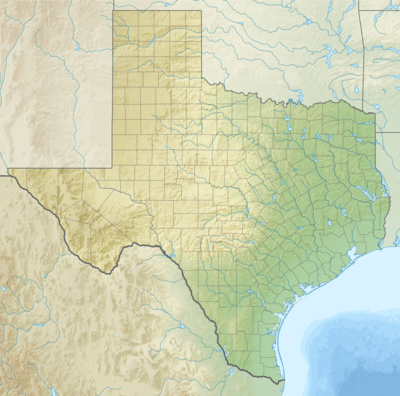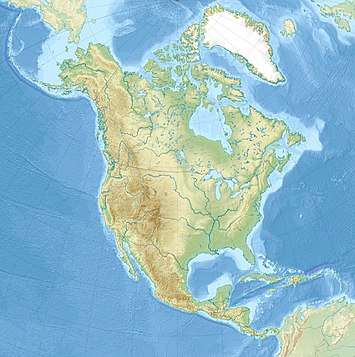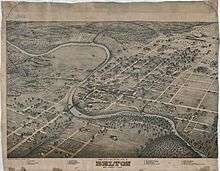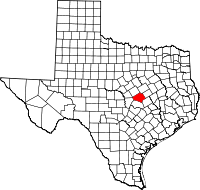Belton, Texas
| Belton, Texas | |||
|---|---|---|---|
| City | |||
 Downtown Belton near Bell County Courthouse | |||
| |||
| Nickname(s): Beltown | |||
|
Location in the U.S. state of Texas | |||
 | |||
 Belton, Texas Location in Texas, United States & North America  Belton, Texas Belton, Texas (the US)  Belton, Texas Belton, Texas (North America) | |||
| Coordinates: 31°3′32″N 97°27′48″W / 31.05889°N 97.46333°WCoordinates: 31°3′32″N 97°27′48″W / 31.05889°N 97.46333°W | |||
| Country | United States | ||
| State | Texas | ||
| County | Bell | ||
| Established | 1850 | ||
| Named for | Peter H. Bell | ||
| Area | |||
| • Total | 20.0 sq mi (51.7 km2) | ||
| • Land | 18.9 sq mi (49.0 km2) | ||
| • Water | 1.0 sq mi (2.6 km2) | ||
| Elevation | 509 ft (155 m) | ||
| Population (2010) | |||
| • Total | 18,216 | ||
| • Density | 910/sq mi (350/km2) | ||
| • Demonym | Beltonian | ||
| Time zone | UTC-6 (Central (CST)) | ||
| • Summer (DST) | UTC-5 (CDT) | ||
| ZIP code | 76513 | ||
| Area code(s) | 254 | ||
| FIPS code | 48-07492[1] | ||
| GNIS feature ID | 1351858[2] | ||
| Interstates |
| ||
| Website |
www | ||
Belton is a city in the U.S. state of Texas, within the Killeen-Temple metropolitan area. The city is on the Interstate 35 corridor between Austin and Waco and is the seat of Bell County.The population was 20,547 in 2015 according to a US Census Estimate.[3] As of 2015 the metro region had a population of 450,051.[4]
History

Belton and Bell County have been the site of human habitation since at least 6000 BC. Evidence of early inhabitants, including campsites, kitchen middens and burial mounds from the late prehistoric era have been discovered in the Stillhouse Hollow Lake and Belton Lake areas. The earliest inhabitants were the Tonkawa, who traditionally followed buffalo by foot. Belton was also home to the Lipan Apache, Wacos, Nadaco, Kiowas and Comanche. By the 1840s most tribes had been pushed out by settlements, but skirmishes with the Commanches existed until the early 1870s.[5]
Belton was first settled 1850 and named Nolanville, taking the name of nearby Nolan Springs which were named for Texan explorer Philip Nolan. In 1851, it changed its name to Belton after being named the county seat of newly created Bell County named after Texas' governor, Peter Hansborough Bell. In 1860, the population was 300, the largest in the county. During the run up to the civil war, Belton had a large pro-Union minority. A Whig Party paper and anti-secession paper called "The Independent" was published there and the city voted overwhelmingly for Sam Houston for governor, who was strongly against Texas secession.[6] Nonetheless, in 1861 Bell County voted for secession and many residents fought in the Confederate Army. After the civil war, Belton experienced unrest. Several pro-union sympathizers were lynched in 1866 and Federal troops were called in to protect the Federal Judge serving in the city. After reconstruction, the city, close to a major feeder of the Chisholm Trail, served as growing business center for the region.
In 1868, Martha McWhirter, a prominent figure in Belton's non-sectarian Union Sunday School, created the only Texas women's commune of the 1800s. The commune started several business ventures including a successful hotel. In 1899, the group sold their holdings and relocated to Maryland.[7] The town experienced rapid growth in the 1880s with the building of the courthouse, Baylor Female College buildings, and a "railroad war" in which, by 1881, Belton was bypassed by the railroad which built Temple as the local junction and depot town. In 1904, the town reported a population of 3,700. The town began to thrive and reached a population of 6,500 in 1928. However the town was decimated by the Great Depression and was down to a population of 3,779 only three years later in 1931.[8]
The town began to recover in the run up to World War II as Fort Hood was opened nearby in 1942. Encompassing over 200,000 acres and almost 90,000 troops, this brought a large population and a lot of economic activity to the area. By 1950, the city's population was back up to 6,246 and by 1990 had reached 12,476. [9]
Geography

Belton is located near the center of Bell County at 31°3′32″N 97°27′48″W / 31.05889°N 97.46333°W (31.058904, -97.463382).[10] It is bordered to the northeast by the Leon River, across which is the city of Temple. Nolan Creek, a tributary of the Leon, runs through the center of Belton. The city limits extend south along Interstate 35 across the Lampasas River nearly to Salado.
By Interstate 35 it is 42 miles (68 km) north to Waco and 60 miles (97 km) south to Austin. Interstate 14/U.S. Route 190 leads west from Belton 16 miles (26 km) to Killeen.
According to the United States Census Bureau, the city has a total area of 20.0 square miles (51.7 km2), of which 18.9 square miles (49.0 km2) is land and 1.0 square mile (2.6 km2), or 5.08%, is water.[11]
Demographics

| Historical population | |||
|---|---|---|---|
| Census | Pop. | %± | |
| 1870 | 281 | — | |
| 1880 | 1,797 | 539.5% | |
| 1890 | 3,000 | 66.9% | |
| 1900 | 3,700 | 23.3% | |
| 1910 | 4,164 | 12.5% | |
| 1920 | 5,098 | 22.4% | |
| 1930 | 3,779 | −25.9% | |
| 1940 | 3,572 | −5.5% | |
| 1950 | 6,246 | 74.9% | |
| 1960 | 8,163 | 30.7% | |
| 1970 | 8,696 | 6.5% | |
| 1980 | 10,660 | 22.6% | |
| 1990 | 12,476 | 17.0% | |
| 2000 | 14,623 | 17.2% | |
| 2010 | 18,216 | 24.6% | |
| Est. 2016 | 20,873 | [12] | 14.6% |
| U.S. Decennial Census[13] | |||
As of the census[1] of 2000, there were 14,623 people, 4,742 households, and 3,319 families residing in the city. The population density was 1,171.3 people per square mile (452.4/km²). There were 5,089 housing units at an average density of 407.6 per square mile (157.4/km²). The racial makeup of the city was 72.67% White, 8.10% African American, 0.64% Native American, 0.95% Asian, 0.10% Pacific Islander, 14.83% from other races, and 2.71% from two or more races. Hispanic or Latino of any race were 25.13% of the population.
There were 4,742 households out of which 37.3% had children under the age of 18 living with them, 49.9% were married couples living together, 16.1% had a female householder with no husband present, and 30.0% were non-families. 24.6% of all households were made up of individuals and 10.6% had someone living alone who was 65 years of age or older. The average household size was 2.69 and the average family size was 3.23.
In the city, the population was spread out with 26.9% under the age of 18, 18.4% from 18 to 24, 26.5% from 25 to 44, 17.1% from 45 to 64, and 11.1% who were 65 years of age or older. The median age was 28 years. For every 100 females, there were 95.0 males. For every 100 females age 18 and over, there were 90.4 males.
The median income for a household in the city was $32,052, and the median income for a family was $38,635. Males had a median income of $31,304 versus $20,678 for females. The per capita income for the city was $14,345. About 12.7% of families and 17.9% of the population were below the poverty line, including 20.7% of those under age 18 and 14.0% of those age 65 or over.
Education
Belton is served by the Belton Independent School District. The school district operates two high schools, three middle schools and nine elementary schools. The district and all of its campuses received the Texas Education Agency's highest accountability rating (met standard) based on student performance on the State of Texas Assessment of Academic Readiness. Both Belton High School & Belton New Tech High School have been included on lists of the nation's best high schools compiled by US News & World Report and Newsweek. Belton New Tech High School and South Belton Middle School have been recognized as Apple Distinguished Schools for their implementation of the district's digital learning initiative. The mascot for Belton ISD is the Tiger.[14]
Belton is home to the University of Mary Hardin–Baylor. Founded in 1845 its is a private Christian university affiliated with the Baptist General Convention of Texas.[15][16] Awarding degrees at the baccalaureate, master's, and doctoral levels it has an enrollment of 3,898.[17]
Parks and recreation
For recreation, Belton has two major lakes: Belton Lake on the Leon River, and Stillhouse Hollow Lake on the Lampasas River. Belton Lake has 11 public access parks owned and maintained by the United States Army Corps of Engineers. Stillhouse Lake has four with lake access. These parks offer many amenities such as boat docks, picnic areas, hike and bike trails, camping sites, public restroom facilities, marinas and designated sandy swimming beaches.[18]
There is also a water park, Summer Fun Water Park.
Notable people

- Danny Barnes, musician
- George Eads, actor, graduated from Belton High School.
- Miriam Amanda Wallace "Ma" Ferguson, first female Governor of Texas
- J. Evetts Haley, political activist and historian, was born in Belton and is buried in the Moffat Cemetery.
- George Jo Hennard, mass murderer, and perpetrator of the Luby's shooting.
- Chris Marion, musician, of the Little River Band was born in Belton
- Khiry Robinson, NFL football player
- Pat Seals, musician, from the alternative rock band Flyleaf
- W. Roy Smythe, global Chief Medical Officer for Heallthcare Informatics for Philips graduated from Belton High School
- Walton Walker, U.S. Army general officer killed in action in the Korean War
- Henry T. Waskow, the basis of a famous article by Ernie Pyle, was a Belton native.
- William Wilbanks, American criminologist, Texas High School Basketball Hall of Fame member
- Rudy Youngblood, actor, graduated from Belton High School.
Footnotes
- 1 2 "American FactFinder". United States Census Bureau. Archived from the original on 2013-09-11. Retrieved 2008-01-31.
- ↑ "US Board on Geographic Names". United States Geological Survey. 2007-10-25. Retrieved 2008-01-31.
- ↑ "Annual Estimates of the Resident Population for Incorporated Places: April 1, 2010 to July 1, 2015". Archived from the original on 2016-06-02. Retrieved July 2, 2016.
- ↑ "Table 1. Annual Estimates of the Population of Metropolitan and Micropolitan Statistical Areas: April 1, 2000 to July 1, 2009 (CBSA-EST2009-01)". 2009 Population Estimates. United States Census Bureau, Population Division. 2010-03-23. Archived from the original (CSV) on 2010-06-15. Retrieved 2010-03-25.
- ↑ "Handbook of Texas Online-Bell County". Retrieved June 27, 2017.
- ↑ The Belton Independent
- ↑ Texas State Historical Association - Belton Woman's Commonwealth
- ↑ "Handbook of Texas Online". Retrieved June 27, 2017.
- ↑ "Handbook of Texas Online". Retrieved June 27, 2017.
- ↑ "US Gazetteer files: 2010, 2000, and 1990". United States Census Bureau. 2011-02-12. Retrieved 2011-04-23.
- ↑ "Geographic Identifiers: 2010 Demographic Profile Data (G001): Belton city, Texas". U.S. Census Bureau, American Factfinder. Retrieved April 10, 2014.
- ↑ "Population and Housing Unit Estimates". Retrieved June 9, 2017.
- ↑ "Census of Population and Housing". Census.gov. Archived from the original on May 12, 2015. Retrieved June 4, 2015.
- ↑ Belton ISD
- ↑ The University of Mary Hardin-Baylor
- ↑ Baptist General Convention of Texas - Supported Universities
- ↑ [news.umhb.edu/archive/2015?page=1 University of Mary Hardin-Baylor News Article]
- ↑ Stillhouse Lake Parks
- ↑ Times-News, Oct. 17 1991
- ↑ Seattle Times, Oct 17 1991
- ↑ Catholic Online, Nov. 6 2009
External links
- City of Belton official website
- The Belton Journal, Texas's oldest continuously published weekly newspaper (since 1866)
- University of Mary Hardin–Baylor
- SeeBelton - General info on Belton, including calendar of upcoming events
| Wikimedia Commons has media related to Belton, Texas. |




